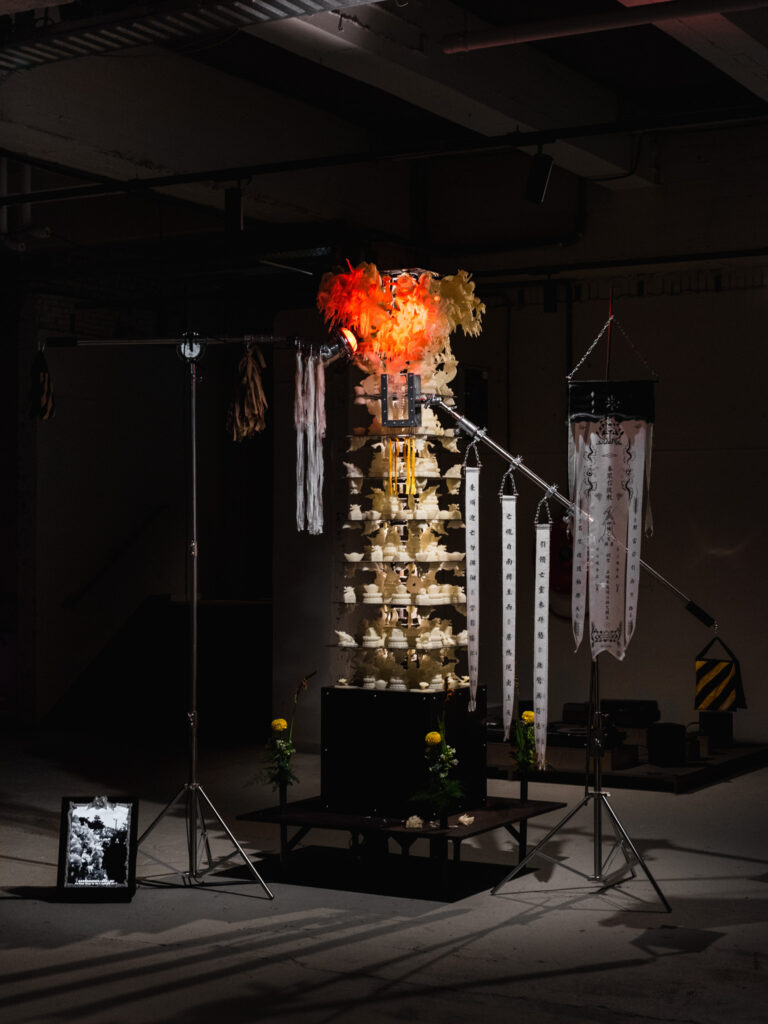Death on Stage
/
2024
/
Death on Stage
/
2024
/
In the context of the current global economy marked by unprecedented consumerism and pervasive digital advertising, commodification logics have not only reshaped the way we buy products but are also fundamentally reconfiguring cultural rituals—transforming religious traditions into stages for modern commercial storytelling.
This shift is not accidental. Mass media, saturated with high-gloss advertisements and images of luxury, systematically repackages cultural practices into formats that emphasise individual success over collective mourning. In this environment, capitalist values appropriate and assimilates traditional structures, functioning like a new religion by promulgating their own sacred texts (advertisements), rituals (consumption habits), and moral codes (status symbols). As a result, traditional objects—such as funeral offerings—are redefined as instruments for displaying wealth rather than symbols of communal care.
This commodification is not limited to consumer goods but extends deeply into cultural and spiritual rituals, as seen in the evolution of Taiwanese funeral customs. Death on Stage examines how rural Taiwanese funeral customs have shifted from communal expressions of grief to competitive economic displays. This transformation, accelerated by Taiwan’s rapid industrialisation in the late 20th century and the growing integration of Western capitalist dynamics, exacerbated the profound impact of commodification on cultural practices.
Traditionally, grieving families stacked canned food into towers as offerings to be shared by friends and family after the funerary function—originally a modest gesture of mutual support and communal care. Over time, these practices have evolved into competitive displays of social status, with the height and cost of the stack contents serving as indicators of family wealth and social prestige.
Death on Stage interrogates these manifestations of market-driven imperatives by documenting the gradual collapse of communal meanings. The output is an installation consisting of a steel tower, adorned with cast wax elements that represent traditional Taiwanese symbols of power and wealth which melt under infrared light, and serve as a visual record of these changes. The melting wax is a deliberate metaphor for how the enduring communal values of the past are slowly eroded by the transient, superficial values imposed by capitalist consumerism. This project thus aims to offer a critical framework and a testament for the public, to examine how deeply ingrained cultural rituals are repurposed to validate modern hierarchies of wealth and reputation. As the viewer walks around the installation, they become part of it. Through a methodology of participatory embodiment, Death on Stage deconstructs capitalist cultural hegemony and urges a rethinking of what constitutes values of community, spirituality, and integrity versus competition, materialism, and disconnection.

